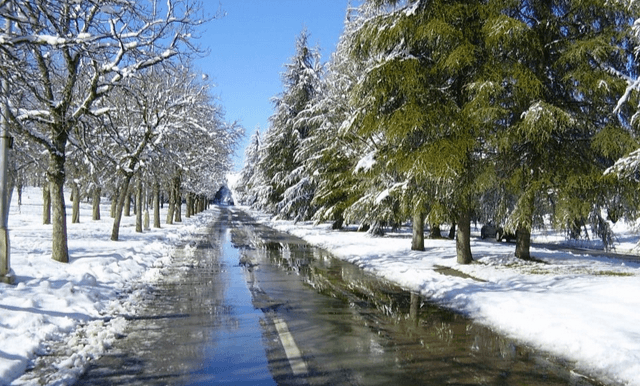
Morocco boasts a wonderful variation in terrain and plants, with fertile levels near its Atlantic coastline, numerous dramatic mountains, and The Sahara Desert.
Location: Morocco is positioned in northwest Africa and is separated from Spain at the northernmost tip by the narrow Straits of Gibraltar. Morocco’s land borders are with Algeria and Mauritania. The Atlantic Ocean lies to the west and the Mediterranean to the north.
Land mass
Approximate. 446,000 sq kilometres
Land use:
cultivatable land 21%.
permanent crops 1%.
long-term fields 47%.
forests and timberland 20%.
other 11%.
Hills.
There are numerous wonderful mountain ranges in Morocco where you can climb up, trek, ski, or ride mules. The outstanding range of foliage, all-natural water features, and mountain peaks is exciting.
The mountains

The mountains are often heavily wooded, with firs and cedars on the higher inclines. In winter a lot of the mountains are covered in snow. Several hill animals live below, including the unusual Atalas ape, in addition to a big variety of migratory birds and predators, such as eagles. There is a large bird book situated where the Moulouya River streams right into the Mediterranean Sea.
Amtoudi Optimal: Situated south of Agadir. You can either climb the 20– 30 centimeters-narrow, rocky route along the edge or hire a mule to do the work for you. A Stunning view awaits you at the top.
Atlas Hills: Filling Up a lot of the northwestern corner of Africa, the Atlas is divided right into 5 regions stretching from Morocco, through northern Algeria and touching Tunisia.
Morocco has the Middle Atlas, High Atlas and Anti Atlas. The High Atlas is the greatest array, with Jabal Toubkal stretching to 4,165 meters. The Middle Atlas reaches 3,350 meters and the Anti Atlas does not reach greater than 2,531 meters, yet it still has some tough landscape. Beside the Anti-Atlas in the severe south, the views contain vast, worn-down canyons which flow with the rivers into the dry, barren wastes of the Sahara desert.
Chefchaouen Mountains: Found in the northeast, southern of Tetouan. The Chefchaouen Hills have 2 heights, Jebel Meggou at 1,625 meters over sea level and Jebel Tisouka with its mosque on top at 2,050 meters.
Oregano Mountains, Taliouine: Found near Tiznit, south of Agadir. These mountains are covered with oregano and transmit the aroma throughout the valley. At the top of these hills (1,500 meters above sea level) are 2 caverns used by goats for shelter.
Rif Mountains: Located in the northernmost area of Morocco on the northeastern restrictions of the Atalas hills. The Rif hills are comprised of high cliffs, near the shoreline of Mediterranean Morocco where the surface is rugged.
Sarhro Hills: Situated southwest of Marrakesh. They are a fantastic wintertime traveling location as the desert cools down and the High Atlas Mountains end up being covered with snow. It is a remote location decorated with volcanic pillars, decayed plateaux, canyons, tiny Berber towns, and the nomadic Ait Atta individuals. The Sarho are perhaps the most captivating mountains in the whole of Morocco.
Setti Fatma: Situated at the end of the Ourika Valley in Marrakesh. It has seven stunning waterfalls, awesome views, and mountain-long tracks for hard hikers.
Tafraoute Hills: Located southern east of Agadir. The rough, pink hills here are the main attractions. A Belgian artist, Jean Verame, when repainted some of the rocks blue in 1984, although these have now faded.
Tan Tan Mountains: Located down south. Recognized for its level top and hollowness in some parts of the hill.
Rivers

Morocco has one of the most extensive river systems in North Africa. Its rivers normally stream northwest to the Atlantic or southeast towards the Sahara Desert. The major rivers of Morocco are the Sebou which runs into the Atlantic, and the Moulouya encountering the Mediterranean.
Deserts

To the south and east exists the Sahara Desert. The Sahara is the globe’s largest desert and in Arabic, its name suggests “wilderness”. The Sahara does not fit the standard idea of an entirely flat and waterless location. There are streams in the hills and the desert sanctuaries support both human and animal life.
Plants in the desert area survive with little water; some have profound origins, and others have small fallen leaves or backs. Desert pets have to also survive with little water and many, eg. the desert fox, continue to be hidden throughout the warmth of the day others, such as gazelles, travel numerous miles trying to find water.
Productive Levels
These are to be discovered along the Atlantic shore, stretching to the Atlas Hills and they are abundant for farming, producing a lot of the country’s vegetables and fruit. It is well irrigated by the meltwater from hill snows from the Atlas. Regular plants are orange trees, date palms, and cork oak trees.
Environment
Morocco’s environment varies extensively: The north is Mediterranean and the south is subtropical while the sea and mountains help to preserve a positive climate.
The winters

Winters are moderate and the summer seasons are hot and completely dry. Average daytime temperature levels in the winter season array from 16 to 23º C and in the summer season, from 33 to 42º C. Like Spain, Morocco has approximately 330 days of sunlight annually.
Mountain heights are covered with snow for the majority of the year.
Desert temperature variants all the time are severe and rains are low and uncertain.
The Setting’s Future.
Morocco’s natural surroundings are under pressure in several means: The rising number of visitors and the more than exploitation of sources such as oil and phosphates could damage the ecosystem in the desert. Overgrazing and the spread of the desert might likewise intimidate currently efficient locations in the future.
Sources et Références
The World Factbook (CIA.gov) offers comprehensive details on Morocco’s geography, climate, and major physical features. This can provide foundational information about the country’s mountain ranges, desert areas, and river systems in the context of its geographic location and natural resources. Visit The World Factbook on Morocco
NASA Earth Observatory has an insightful overview of Morocco’s High Atlas Mountains, complete with vivid descriptions and satellite images. This resource offers a scientific perspective on the geological formations of Morocco’s mountains, such as ridges and valleys, influenced by tectonic activities. Read more at NASA Earth Observatory
U.S. Geological Survey (USGS): This site provides resources on various landscapes and geological features across Morocco, such as the Anti-Atlas Mountains and their ancient formations. It’s a great source for understanding the plate tectonics that have shaped Morocco’s topography over millions of years. You can explore the geological aspects through images and reports related to Morocco’s distinct landscape. Explore Morocco’s geology on USGS.



